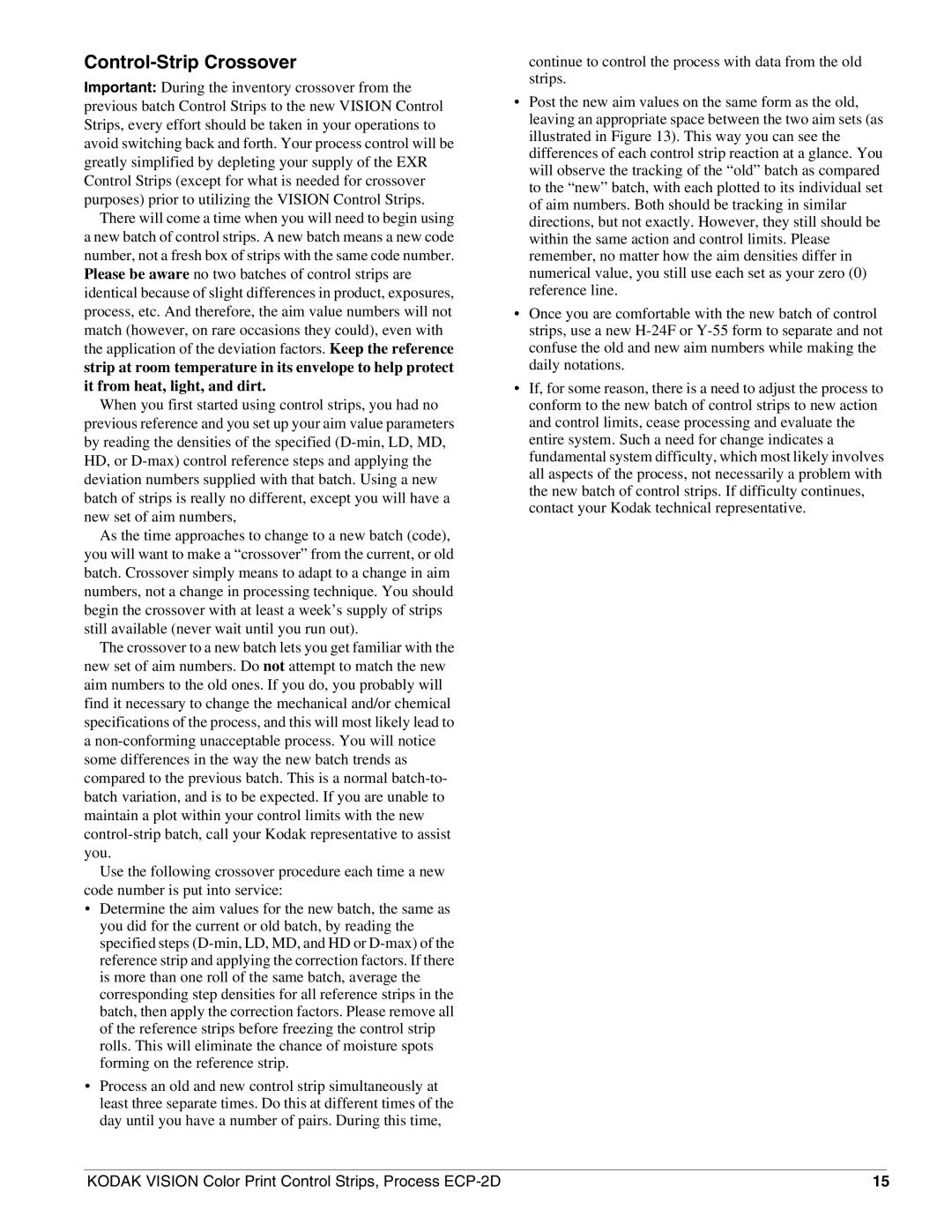Control-Strip Crossover
Important: During the inventory crossover from the previous batch Control Strips to the new VISION Control Strips, every effort should be taken in your operations to avoid switching back and forth. Your process control will be greatly simplified by depleting your supply of the EXR Control Strips (except for what is needed for crossover purposes) prior to utilizing the VISION Control Strips.
There will come a time when you will need to begin using a new batch of control strips. A new batch means a new code number, not a fresh box of strips with the same code number. Please be aware no two batches of control strips are identical because of slight differences in product, exposures, process, etc. And therefore, the aim value numbers will not match (however, on rare occasions they could), even with the application of the deviation factors. Keep the reference
strip at room temperature in its envelope to help protect it from heat, light, and dirt.
When you first started using control strips, you had no
previous reference and you set up your aim value parameters by reading the densities of the specified
As the time approaches to change to a new batch (code), you will want to make a “crossover” from the current, or old batch. Crossover simply means to adapt to a change in aim numbers, not a change in processing technique. You should begin the crossover with at least a week’s supply of strips still available (never wait until you run out).
The crossover to a new batch lets you get familiar with the new set of aim numbers. Do not attempt to match the new aim numbers to the old ones. If you do, you probably will find it necessary to change the mechanical and/or chemical specifications of the process, and this will most likely lead to
a
Use the following crossover procedure each time a new code number is put into service:
• Determine the aim values for the new batch, the same as you did for the current or old batch, by reading the specified steps
•Process an old and new control strip simultaneously at least three separate times. Do this at different times of the day until you have a number of pairs. During this time,
continue to control the process with data from the old strips.
•Post the new aim values on the same form as the old, leaving an appropriate space between the two aim sets (as illustrated in Figure 13). This way you can see the differences of each control strip reaction at a glance. You will observe the tracking of the “old” batch as compared to the “new” batch, with each plotted to its individual set of aim numbers. Both should be tracking in similar directions, but not exactly. However, they still should be within the same action and control limits. Please remember, no matter how the aim densities differ in numerical value, you still use each set as your zero (0) reference line.
•Once you are comfortable with the new batch of control strips, use a new
•If, for some reason, there is a need to adjust the process to conform to the new batch of control strips to new action and control limits, cease processing and evaluate the entire system. Such a need for change indicates a fundamental system difficulty, which most likely involves all aspects of the process, not necessarily a problem with the new batch of control strips. If difficulty continues, contact your Kodak technical representative.
KODAK VISION Color Print Control Strips, Process | 15 |
